Sensors already equip a range of tools to enhance monitoring capacity for conservation. Some of the higher bandwidth technologies, like camera traps and acoustic monitoring systems, have been essential elements of the conservation toolkit for decades, and thus have enough users that we've created dedicated WILDLABS groups to address them. But a whole range of lower bandwidth sensors beyond these core technologies are being increasingly integrated into conservation monitoring systems, and offer rich new insights into the wildlife and ecosystems we're all working to protect. As with many technologies, cost and access have historically been challenges to the adoption of new sensors, but with low-cost and open-source solutions on the rise, we're excited to see what the future of this space holds.
Getting Started with Sensors:
- Watch Shah Selbe's Tech Tutors episode on scaling FieldKit, an open-source conservation sensor toolbox, from a project to a successful conservation tech product.
- Check out our Virtual Meetup about Low-Cost, Open-Source Solutions in conservation tech, including a talk by Alasdair Davies on the Arribada Initiative's work with thermal sensors in early warning systems.
- For a more in-depth introduction, watch the first video in our datalogger mini-series: Freaklabs: How do I get started with Arduino?
In this group, you'll meet others who are using and innovating diverse sensors in their work, discuss ways to make sensors more effective & accessible for conservationists, learn about what sensors are already helping us accomplish in the field, and have the opportunity to ask and answer questions. Join this group to get started!
Header image: Emma Vogel, University of Tromsø
Movement Ecologist studying the where, why, and how animals move throughout our world. Current work is investigating the movement and energetics of large neotropical bats in a changing environment with ephemeral resources.



- 0 Resources
- 23 Discussions
- 22 Groups
- @matt_hron
- | He/Him
Wildlife Protection Solutions (WPS)
Product Manager at Wildlife Protection Solutions



- 0 Resources
- 8 Discussions
- 8 Groups
- @maddy
- | Dr
Iam a Doctorate in molecular bology by profession & associated with a tech startup, focued on IoT/sensor based automation solutions. But I spend half of my time to document and conserve local & wildlife arond us and trying to explore our technology in conservation.Love to join
- 0 Resources
- 0 Discussions
- 5 Groups
Martin Wainaina Chege is a registered Geomatics Expert with experience in GIS software development, Remote sensing, Surveying, and Environmental and Social Impact Assessment (ESIA) with theoretical knowledge, technical and practical skills in IoT, Software Engineering, data


- 1 Resources
- 7 Discussions
- 5 Groups
trying to understand and improve the welfare of all animals that can suffer


- 4 Resources
- 6 Discussions
- 7 Groups
Cornell University


- 0 Resources
- 0 Discussions
- 12 Groups
University of Antwerp
- 0 Resources
- 12 Discussions
- 7 Groups
Robotics and IoT Engineer living in Costa Rica since 2000
- 0 Resources
- 1 Discussions
- 4 Groups
Neuroscientist & engineer looking for a data/R&D role in conservation.
- 0 Resources
- 0 Discussions
- 17 Groups
- @hyodopenguin
- | she/her
I am currently a rising junior at UC Berkeley studying data science. I hope to apply data with biodiversity, especially by utilizing camera traps for species classification. People in conservation tech are truly living my dream careers, and I can't wait to get even more inspired!

- 0 Resources
- 5 Discussions
- 23 Groups
- @iainhook
- | Mr
Passionate supporter of New Zealands predator free 2050 goals. Founder of both eTrapper Ltd - offering IoT solutions to enhance efficiencies of conservation projects, and Maungakiekie Songbird - a community based project to enhace local habitat around One Tree Hill in Auckland.
- 0 Resources
- 1 Discussions
- 6 Groups
- 0 Resources
- 0 Discussions
- 12 Groups
The Zoological Society of London, with the support of WILDLABS and the UK Space Agency, are proud to publish this new guide to satellite technologies for tracking wildlife.
17 February 2023
A pilot program in Oregon’s Willamette Valley will test how well artificial intelligence-enabled sensors can identify and characterize wildfires, which will help with responder resource allocation and boost community...
15 February 2023
Technology to End the Sixth Mass Extinction. Salary: $104k-144K; Location: Washington DC or Seattle WA, potential hybrid; 5+ years of Full stack development experience; Deadline March 15th - view post for full job...
10 February 2023
Frontiers in Conservation Science is calling for submissions for a Research Topic that aims at examining the paradoxical relationship that has been established in recent years between the flagships of new technology...
10 February 2023
Are you excited by the potential for new technologies to help monitor the natural world? Do you enjoy communicating your passion for technology and nature with diverse audiences? We are seeking an enthusiastic...
2 February 2023
Consultancy opportunity at ZSL for an experienced monitoring specialist to support species monitoring in rewilding landscapes across Europe
31 January 2023
Sending real-time alerts from ecological sensors such as camera traps in areas with poor data connectivity is complex and involves integrating a large number of potentially complex hardware and software components. Our...
13 January 2023
The authors "tested the use of a thermal imager to assess the occupancy of enclosed nests, using nest-box populations of small passerines. Based on a thermal image of each nest box, observers were able to predict nest-...
13 January 2023
WILDLABS and Fauna & Flora International are seeking an early career Vietnamese conservationist for 12-month paid internship position to grow and support the Southeast Asia regional community in our global...
11 January 2023
As the FieldKit hardware ecosystem grows, Conservify is seeking a Junior Electrical Engineer to assist with testing, troubleshooting, prototype development, and developing production test fixtures for our growing...
9 December 2022
Careers
Conservify is seeking a hands-on Senior Software Engineer with front end and back end experience developing rich web and mobile applications, and a strong desire to build a best-in-class product that stands out in both...
9 December 2022
Conservify is seeking a hands-on Senior Product and Production Manager with strong interpersonal and organizational skills to remotely lead a small seasoned team of thinkers, designers and engineers who are shaping the...
9 December 2022
December 2023
event
16 Products
Recently updated products
117 Products
1 R&D Projects
81 Organisations
Recently updated products
Recently updated R&D Projects
Recently updated organisations
| Description | Activity | Replies | Groups | Updated |
|---|---|---|---|---|
| Hi @Ebennitt, we do have a working solution that works with all our OpenCollar devices. We connect to sub skin implants and then send and store those readings using Bluetooth,... |
|
Sensors | 3 months 2 weeks ago | |
| Hi Simon,We (Reneco International Wildlife Consultants) have an ongoing collaboration with a local University (Abu Dhabi, UAE) for developing AI tools (cameratrap/drone... |
|
Acoustics, AI for Conservation, Animal Movement, Camera Traps, Citizen Science, Connectivity, Drones, Early Career, eDNA & Genomics, Marine Conservation, Protected Area Management Tools, Sensors | 4 months 1 week ago | |
| No, not yet. The player we attached does support slower/faster replay up to a certain precision, but I'm not sure that this will be sufficiently precise for the kind of offsets we... |
|
Animal Movement, Data management and processing tools, Sensors, Software Development | 5 months ago | |
| Hello everyone,I built Brave Puffin (https://bravepuffin.com) - a small, autonomous, long range, solar powered boat. It is designed to... |
|
Build Your Own Data Logger Community, Marine Conservation, Sensors | 5 months ago | |
| Hello WalterThanks for your input. I have achieved better results with the puc when hooking it up to a powerbank. Have got them set up to "recording only", and GPS to low power... |
|
Acoustics, AI for Conservation, Citizen Science, Sensors | 5 months ago | |
| So, updated the text a bit with images cropped at 100% zoom :) we are already happy with the time reductions we got, but... would like to get at least 90% time reduction instead... |
|
Data management and processing tools, Latin America Community, Sensors | 5 months ago | |
| Thanks! The Teensys are nice for processing power if choosing an external Lora board I’d say that’s a good choice. I started with teensies, there was a well supported code base... |
|
Camera Traps, Sensors | 5 months 2 weeks ago | |
| There's quite a few diy or prototype solutions described online and in literature - but it seems none of these have made it to market yet as generally available fully usable... |
|
AI for Conservation, Camera Traps, Human-Wildlife Conflict, Sensors | 6 months ago | |
| The PCB mount terminals are actually quite robust and paired with a lock washer and something that would better secure the nylon (e.g., a piece of flat grooved plastic to add... |
|
Acoustics, Conservation Dogs, Sensors | 6 months 1 week ago | |
| No problem at all Yu (@JY) and good luck with your studies! Happy to discuss this and any other ideas any time.All the best,Rob |
+10
|
Sensors, Animal Movement, Connectivity, Drones, Open Source Solutions, Emerging Tech | 6 months 3 weeks ago | |
| @cmwainaina please take a look |
|
Animal Movement, AI for Conservation, Camera Traps, Connectivity, Data management and processing tools, East Africa Community, Emerging Tech, Ethics of Conservation Tech, Human-Wildlife Conflict, Marine Conservation, Protected Area Management Tools, Geospatial, Sensors, Software Development | 10 months ago | |
| A community device isn’t just about the technology; it’s also about creating a collaborative community. Shout out to all innovators... |
|
Animal Movement, Marine Conservation, Open Source Solutions, Sensors | 10 months 3 weeks ago |
Thermal Sensor Project Update: Testing with live animals at the San Diego Zoo
27 July 2018 12:00am
HWC Tech Challenge: Smart Electric Fence Solution
5 June 2018 12:00am
From drone swarms to tree batteries, new tech is revolutionising ecology and conservation
 Euan Ritchie
and 1 more
Euan Ritchie
and 1 more
9 May 2018 12:00am
Eddy Expedition Log: Characterizing Eddies
23 April 2018 12:00am
HWC Tech Challenge: Thermopile Sensor Project
19 April 2018 12:00am
Eddy Expedition Log: Chasing Eddies
10 April 2018 12:00am
What technologies could help us monitor cave invertebrates?
23 July 2016 8:44am
9 April 2018 2:35am
Hi Tony, I'm leading a cross disciplinary group of researchers at Deakin University in Australia to build new technology for monitoring wildlife and engage citizen scientists with collecting data.
We have designed a video trap for monitoring reptiles and amphibians, that uses constant video and has some on-board AI to not save video with nothing in it. Works day and night (UV illumination at night), but uses a lot of power so we have a battery and solar panel arrangement. I expect this could be easily adapted to monitor cave fauna. Let me know if you already have a solution or want to discuss idea further.
Don Driscoll
d.driscoll@deakin.edu.au
Thermal imaging scopes
26 March 2018 9:26pm
27 March 2018 2:20pm
Hi Luke,
I'll leave specific recommendations to others who are better qualified ( @Eric+Becker @Rachel+Kramer or @Alasdair - maybe you can advise?) but I did come across something yesterday that may be relevant.
There is a live GroupGets campaign on at the moment (2 days left) for DIY-theromocam kits - not a scope but could do the trick if your budget is restricted as it's under $300 and you're willing to dabble in DIY?
The DIY-Thermocam is a do-it-yourself infrared camera, based on the FLIR Lepton long-wave infrared sensor and the popular Teensy 3.6 ARM Cortex M4 MCU.
The aim of this project is to give private persons, educational institutes and companies access to a portable, affordable and customizable thermal imaging plattform.
There are various applications like finding heat leaks in the insulation of buildings, the analysis of electrical or mechanical components, the detection of persons / animals or even mounting it on a drone, together with the additional video out module.
Constructed as a self-assembly solution, the DIY-Thermocam allows you to take advantage of the versatile possibilities of thermal imaging and to save money at one go.
Everything, from software to hardware, is completely open-source. This allows everyone to modify or extend the functionalities of the device to their own needs.
GroupGets does now offer a complete self-assembly kit, so you don't have to worry about buying all the parts on your own.
A scientific paper is also available, giving an overview about the whole project and its capabilities.
Update: haraldg has written a nice set of tools for post-processing the thermal raw data files. Check it out here. He also published a short article about manual calibration here.
3 April 2018 3:39pm
Hi @Luke_edwards - I just had a chat with my colleagues @Eric+Becker and @ColbyLoucks at WWF who will get back to you with some recommendations from experience with the thermal scopes that we've explored for anti-poaching (FLIR TK and SCOUT III).
Great to see that you're pairing conservation dogs and thermal imaging for wildlife surveys in Australia. In order to select the most cost-effective thermal imaging scope for your needs, it's important to know the range that you require, density of vegetation and size of the species you are monitoring. Can you share a bit more information on your parameters?
3 April 2018 11:03pm
The current project is in open plains. From a handler perspective the distance will be from 20m -100m. I will be working at night so it will be looking for me target, the Plains Wanderer, a small bird. Also it would be used to see other native and domestic animals in the area.
Other projects range from open plains through to rain forests.
Eddy Expedition Log: Setting Off to Explore Eddies
3 April 2018 12:00am
The Plant-Powered Camera Trap Challenge
3 April 2018 12:00am
Hacking together DIY time-lapse soil cameras
29 March 2018 11:35am
#Tech4Wildlife Photo Challenge 2018: Our Top 10
3 March 2018 12:00am
Landsense Innovation Challenge
19 February 2018 12:00am
Technology Empowered Conservation Lecture Series
18 January 2018 12:00am
Instant Detect 2.0: A Connected Future for Conservation
17 January 2018 12:00am
Congratulations to Zoohackathon winners, team ODINN!
6 December 2017 12:00am
FIT Cheetahs
4 December 2017 12:00am
How The San Diego Zoo Is Using AI And Drones To Save Polar Bears
30 November 2017 12:00am
RaspberryPI
5 March 2016 7:35am
20 May 2016 11:10pm
Pi Zero get a little upgrade... Anyone need a camera trap?
http://petapixel.com/2016/05/19/5-raspberry-pi-zero-now-camera-compatible/

11 October 2017 10:09am
Hi All,
just sharing this for all those Raspberry Pi beginners like me, 91% off a training bundle
https://deals.thenextweb.com/sales/complete-raspberry-pi-3-2
2 November 2017 6:02pm
Also if you are still looking for a solution this was published earlier this year and gives recommendations for soundscape microphones : http://onlinelibrary.wiley.com/doi/10.1111/2041-210X.12678/full
HWC Tech Challenge Winners Announced
1 November 2017 12:00am
HWC Tech Challenge Update: Meet the Judges
20 October 2017 12:00am
Download New Conservation Tech Guidelines: Camera Traps, Acoustics and LiDAR
11 October 2017 12:00am
Kids, Drones & Science At The Water’s Edge
4 October 2017 12:00am
Saliva-powered paper battery
26 September 2017 2:55pm
DAS: A Scaleable Solution For Protected Area Management
26 September 2017 12:00am
How to lose a BRUV in 10 days
26 September 2017 12:00am
Elephant's Banquet
19 September 2017 12:00am
IoT breakthrough - applications for wildlife conservation?
15 September 2017 3:10pm
Thermal cameras and wildlife
26 July 2017 6:51pm
26 July 2017 8:33pm
Oh, cool! It'd be interesting seeing if it could be used for tracking as well. I've used some handheld cameras and looked at footprints, but those disappeared pretty quickly.
21 August 2017 12:17pm
Abstract here from the IMC Congress in Perth, they found the higher-res versions are much better than the less expensive (e.g. iphone) versions when it comes to finding animals.
Now you see me: How thermal imaging increases detection of cryptic nocturnal mammals in tropical regions
Avril Underwood1 , Mia Dehre-Miller2 1. James Cook University, Smithfield, Queensland, Australia 2.
University of Lancaster, Lancaster, United Kingdom Accurate measures of species abundance and distribution underpin effective wildlife management and conservation strategies. Obtaining these data is very challenging when researching the cryptic nocturnal arboreal mammals of in the dense forest of the Wet Tropics. Our research shows that using a hand-held thermal imager significantly increases the detection rate of all mid-sized arboreal mammals when compared to the most commonly used method of spotlighting. We determine the optimal environmental and mechanical parameters for thermal imaging, and we investigate ‘cost-versus-result’ of hand-held imaging devices currently available on the market. We suggest that hand-held thermal imaging is a great emerging technology for cryptic arboreal mammal detection across tropical forested regions and beyond.
21 August 2017 12:20pm
My own experience is with the FLIR iphone attachment, just informal testing, but hasn't been that great at finding animals. I also think it would work better in the early AM. In the evening there can still be a lot of rocks and trees still warm from the sun.
Funding Opportunity: Leverage space technology for wildlife protection
6 July 2017 12:56pm






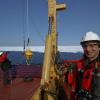
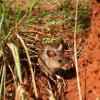











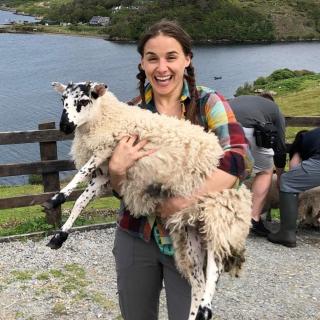











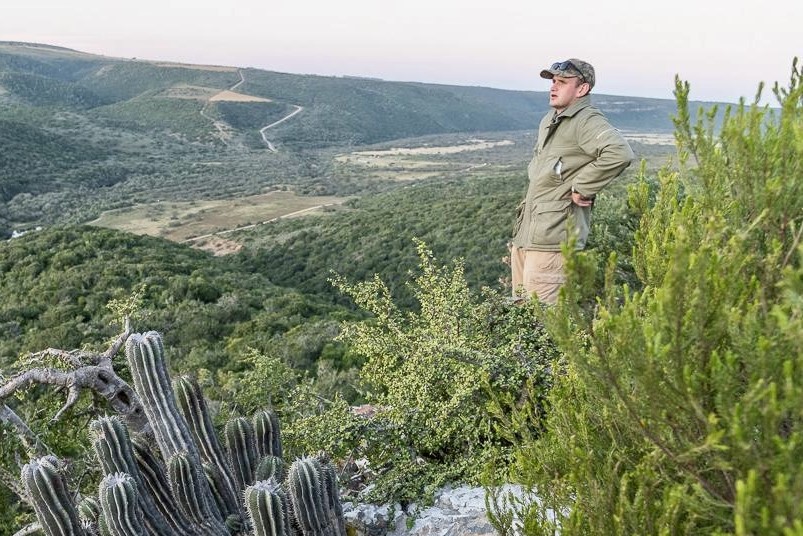

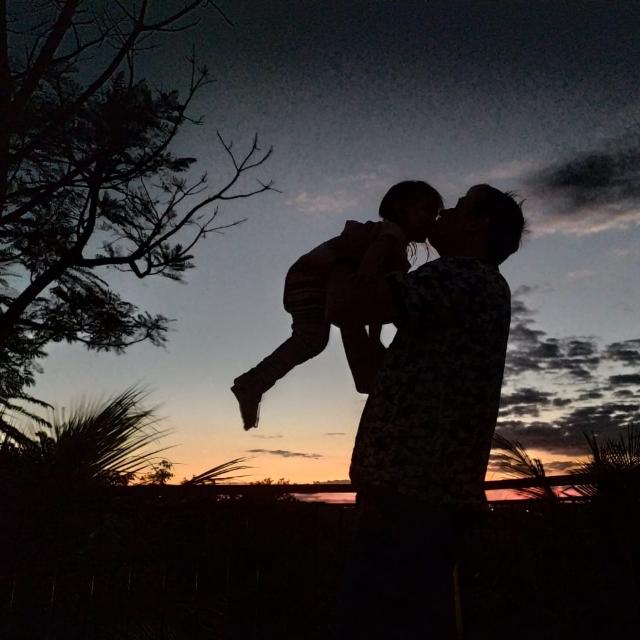











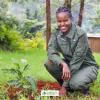










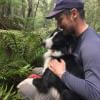
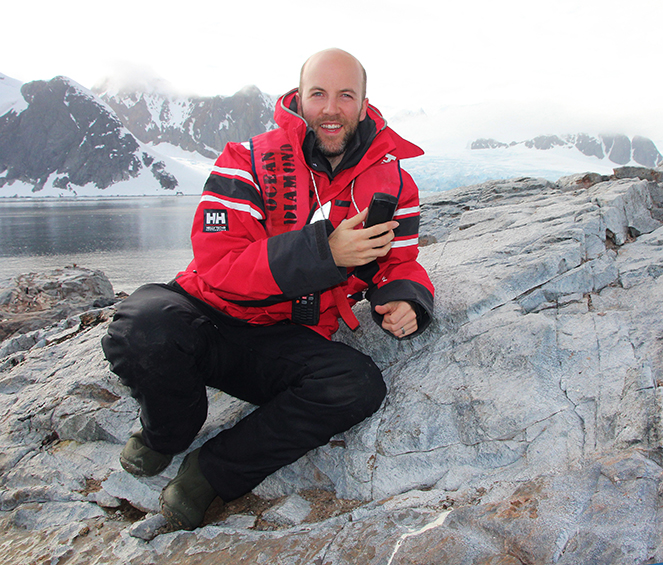

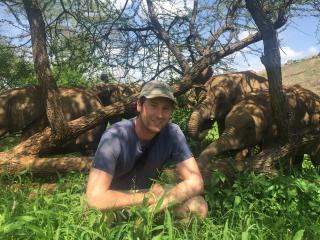

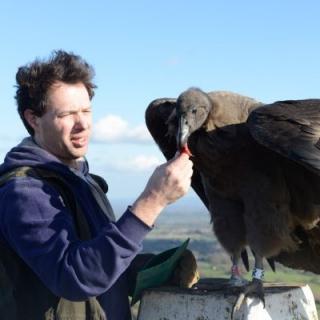
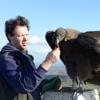
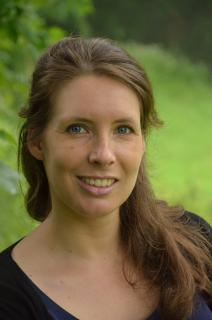

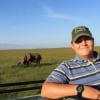
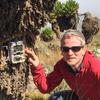
31 March 2023 2:15pm